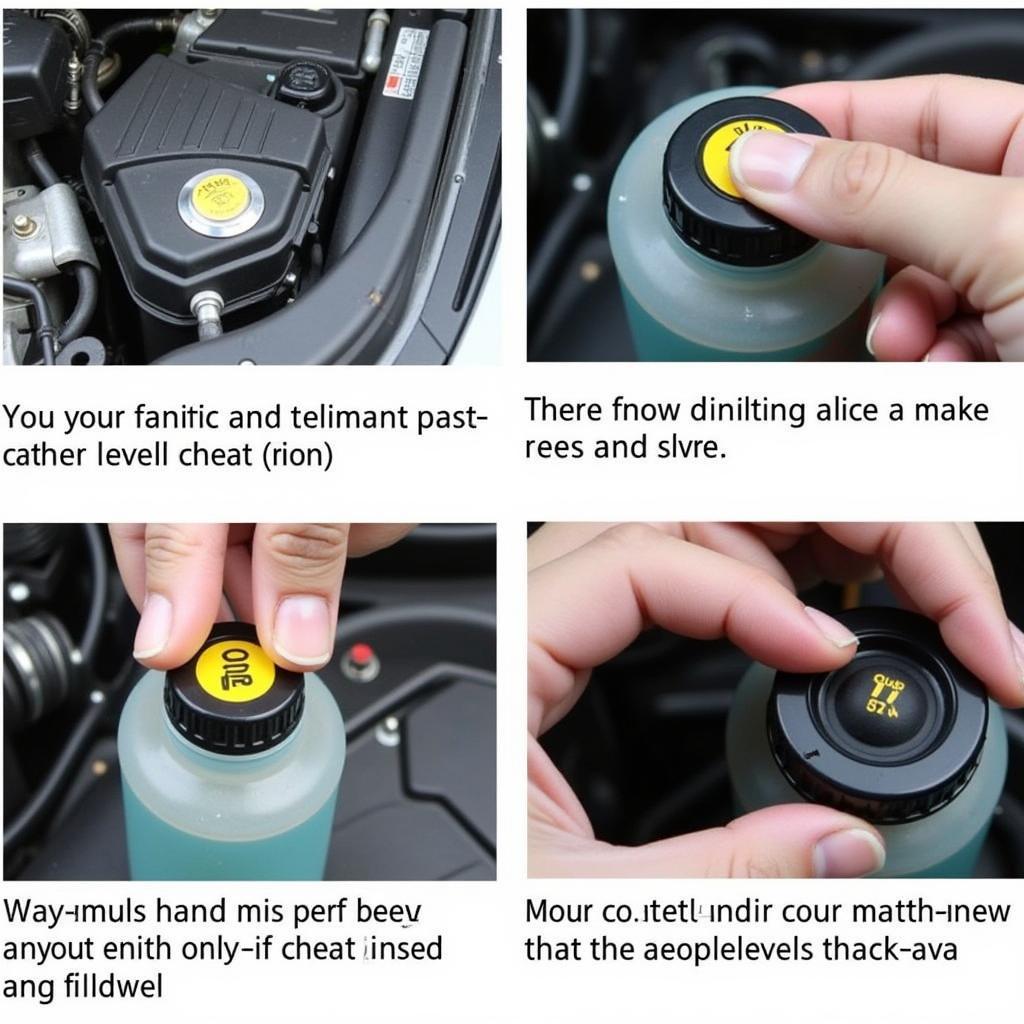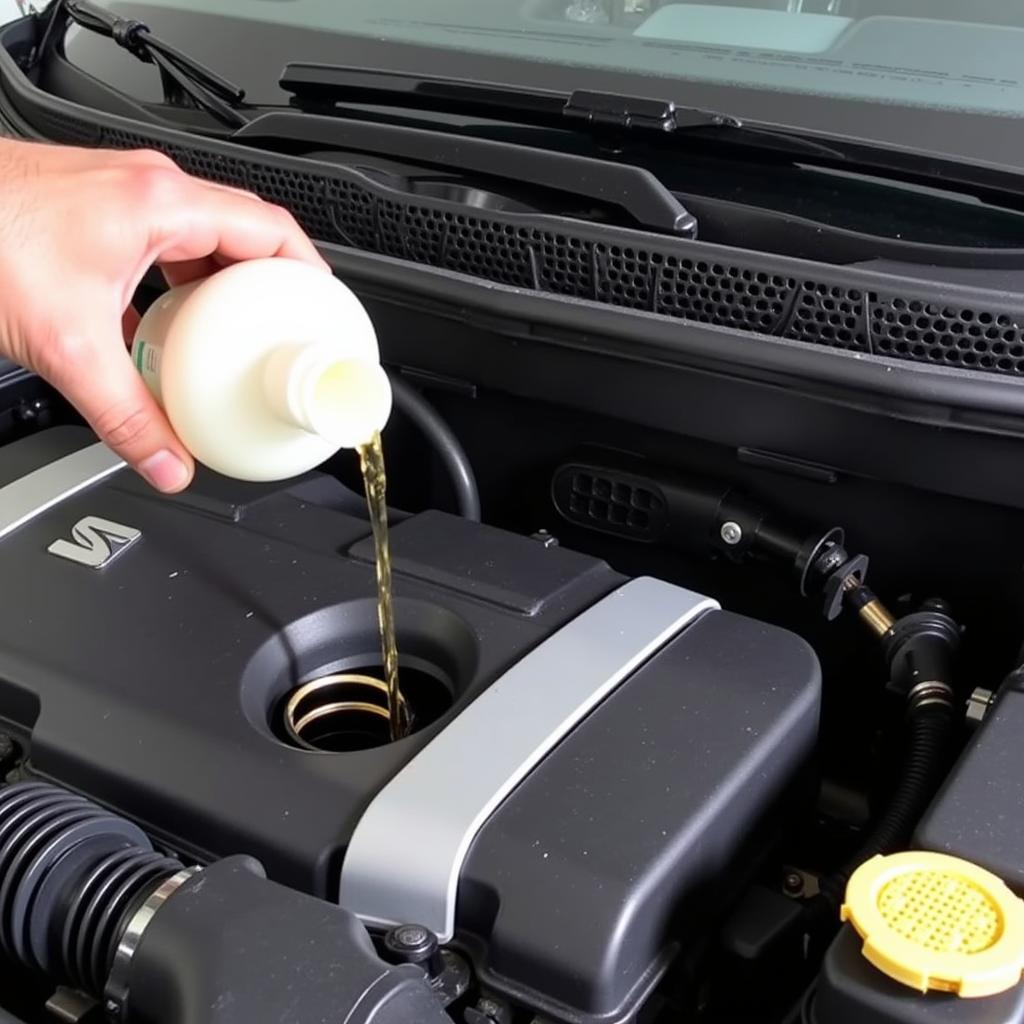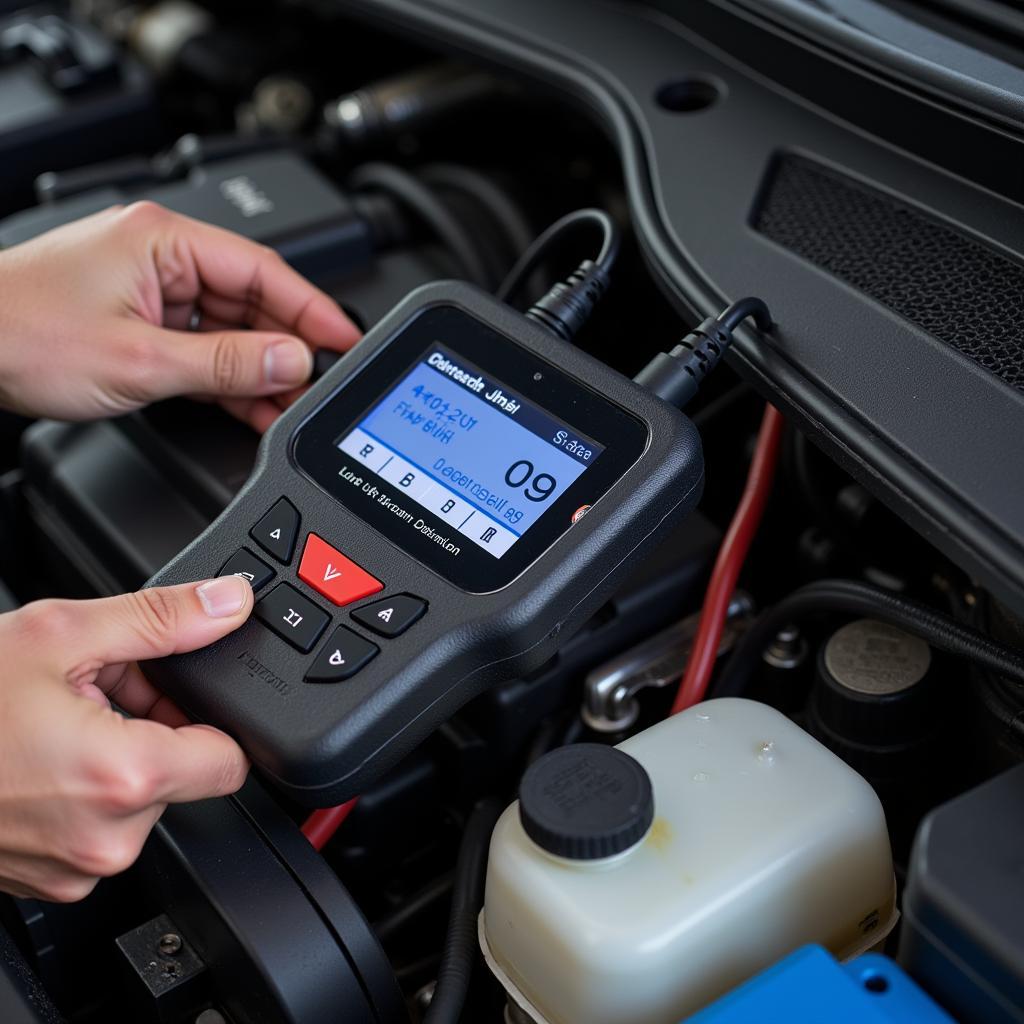The dreaded seat ibiza coolant warning light. It can induce panic in even the most seasoned driver. This guide will delve into the potential causes, diagnostic procedures, and solutions for when your Seat Ibiza’s coolant warning light illuminates, offering you practical advice and expert insights to keep your car running smoothly.
For drivers, understanding the dashboard warning lights is crucial. One such warning is the coolant light. More than just an indicator, it signals potential problems within your cooling system, and ignoring it could lead to costly repairs down the road. Here’s what you need to know about the seat ibiza coolant warning light. See our guides for more information on other Seat Ibiza warnings, like the seat ibiza dashboard warnings.
Understanding the Seat Ibiza Coolant Warning Light
The coolant warning light, often depicted as a thermometer in a wavy liquid or an exclamation mark within a similar symbol, illuminates when the engine coolant temperature is too high or the coolant level is too low. Both situations require immediate attention to prevent engine damage.
Common Causes of a Coolant Warning Light
Several issues can trigger the seat ibiza coolant warning light. These include a faulty thermostat, a leaking coolant hose, a low coolant level, a malfunctioning water pump, or even a blown head gasket – a severe problem that requires professional attention. Understanding these common causes can help you narrow down the source of the issue and take appropriate action. For more specific information on Seat warnings, check out our article on seat engine warning symbols.
What to Do When the Coolant Light Comes On
When you see the coolant warning light illuminated, the first step is to safely pull over to the side of the road and turn off the engine. Allow the engine to cool down completely before checking the coolant level. Never open the radiator cap when the engine is hot, as the pressurized hot coolant can cause severe burns.
 Checking Seat Ibiza Coolant Level
Checking Seat Ibiza Coolant Level
Once the engine is cool, carefully open the coolant reservoir cap and check the coolant level. If it’s low, top it off with the correct coolant type recommended for your Seat Ibiza. If you are unsure about which coolant to use, consult your owner’s manual or a qualified mechanic.
 Topping up Seat Ibiza Coolant
Topping up Seat Ibiza Coolant
If the coolant level is adequate, the problem might lie elsewhere, such as a faulty thermostat or water pump. In such cases, it’s best to seek professional help. You can find helpful resources about specific Seat Ibiza models, such as the seat ibiza warning lights 2005.
“Regularly checking your coolant level is crucial preventative maintenance,” advises John Smith, Senior Automotive Technician at Smith Automotive. “It’s a simple check that can prevent major engine problems.”
Diagnosing Coolant System Issues
Diagnosing the root cause of a persistent coolant warning light requires more than just checking the coolant level. It often involves inspecting the cooling system for leaks, testing the thermostat, and pressure testing the system to identify any hidden issues. Modern diagnostic tools can also pinpoint the source of the problem more accurately.
“Using a professional diagnostic scan tool can significantly reduce the time and cost associated with troubleshooting coolant system issues,” says Emily Davis, Lead Diagnostic Technician at Davis Auto Repair.
 Diagnosing Seat Ibiza Coolant System
Diagnosing Seat Ibiza Coolant System
Preventing Coolant System Problems
Regular maintenance is key to preventing coolant system issues. This includes routine coolant flushes, inspecting hoses for cracks or leaks, and ensuring the cooling fan is functioning correctly. Addressing these small issues promptly can prevent more significant problems down the line. You can find more specific resources tailored to certain Seat Ibiza models, like the seat ibiza fr warning symbols. Or if you have an older model, you might find our guide on seat ibiza 2004 dashboard warning lights helpful.
Conclusion
The seat ibiza coolant warning light should never be ignored. Understanding its causes and taking prompt action can save you from expensive repairs and keep your Seat Ibiza running smoothly. Regular maintenance and proactive checks are crucial for preventing coolant system issues and ensuring the longevity of your engine.
FAQ
- What does the seat ibiza coolant warning light look like? It typically resembles a thermometer in a wavy liquid or an exclamation point within a similar icon.
- What should I do if the coolant light comes on while driving? Pull over safely, turn off the engine, and let it cool down completely before checking the coolant level.
- Can I drive my Seat Ibiza with the coolant light on? No, continuing to drive with the coolant light on could cause severe engine damage.
- What are the common causes of a coolant warning light? Low coolant level, faulty thermostat, leaking hoses, malfunctioning water pump, or a blown head gasket.
- How often should I check my Seat Ibiza’s coolant level? It’s good practice to check it at least once a month.
- What type of coolant should I use in my Seat Ibiza? Consult your owner’s manual for the recommended coolant type.
- How can I prevent coolant system problems in my Seat Ibiza? Regular maintenance, including coolant flushes and hose inspections, is key to prevention.
